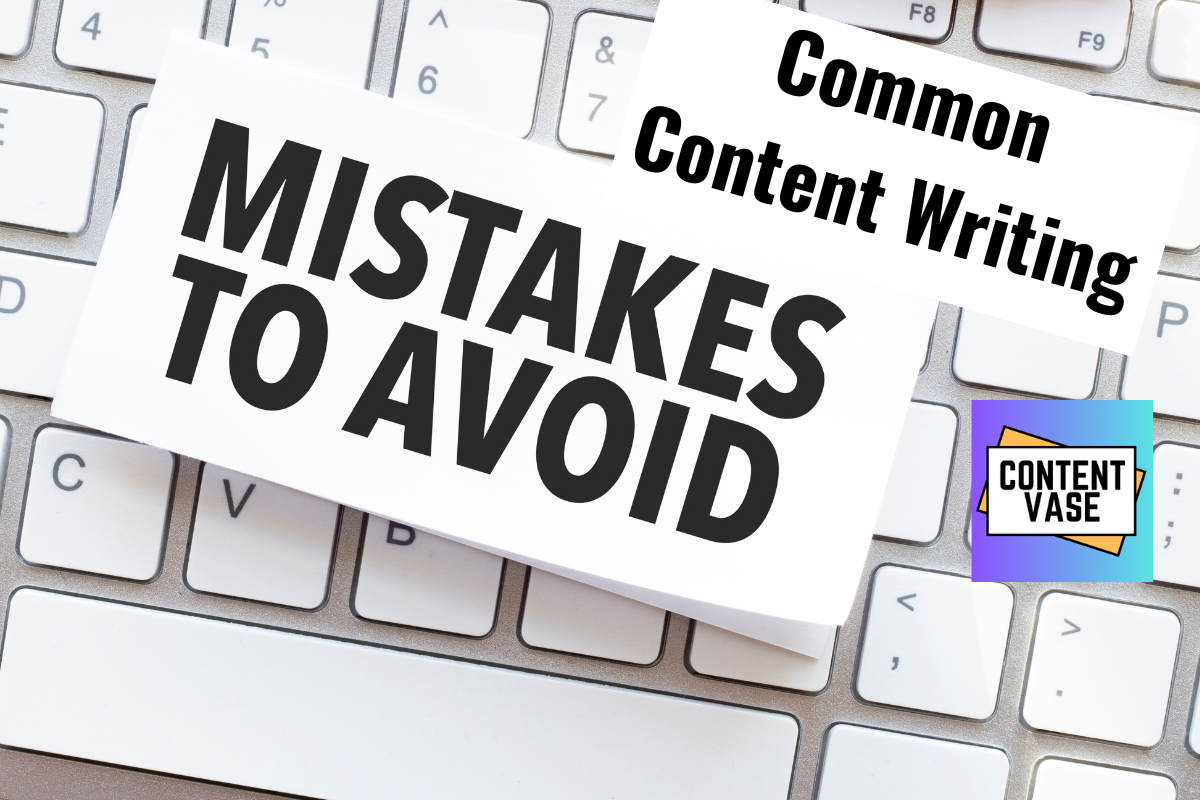10 Common Content Writing Mistakes and How to Avoid Them
Content writing is a powerful way for businesses, bloggers, and marketers to attract, engage, and convert readers into loyal customers. However, even expert writers can fall into common traps that undermine their content’s effectiveness. Here are 10 common content writing mistakes and how to avoid them.
Let’s get started.
1. Lack of Clear Purpose
The Mistake:
One of the most common errors is not having a clear purpose for your content. Without a specific goal, your writing can become unfocused, leaving readers confused about the main message.
How to Avoid It:
Before you start writing, define the purpose of your content. Are you aiming to inform, entertain, or persuade your audience? Outline your main points and ensure each paragraph supports your primary objective. This approach will help maintain clarity and direction throughout your piece.
2. Ignoring the Target Audience
The Mistake:
Writing without considering who will read your content is a significant misstep. If your content doesn’t resonate with your target audience, it’s unlikely to achieve the desired impact.
How to Avoid It:
Understand your audience’s needs, interests, and pain points. Tailor your language, tone, and topics to align with their preferences. Conduct audience research, create reader personas, and regularly review feedback to refine your approach.
3. Weak Headlines
The Mistake:
Headlines are the first thing readers see, yet many writers overlook their importance. A weak or misleading headline can deter potential readers.
How to Avoid It:
Craft compelling and accurate headlines that grab attention and promise value. Use powerful words, ask questions, or highlight benefits to pique curiosity. Tools like CoSchedule’s Headline Analyzer can help you optimize your headlines for maximum impact.
4. Overloading with Keywords
The Mistake:
While keywords are essential for SEO, overstuffing them into your content can make it read awkwardly and reduce its quality. This practice, known as keyword stuffing, can also harm your search engine rankings.
How to Avoid It:
Use keywords naturally and sparingly (not forcefully). Focus on creating high-quality, valuable content that incorporates keywords seamlessly. Strive for a keyword density of roughly 1-2%, but ensure readability remains the priority.
5. Neglecting Readability
The Mistake:
Dense, hard-to-read content can quickly lose readers. Long paragraphs, complex sentences, and jargon (terminologies used) can make your writing inaccessible.
How to Avoid It:
Increase readability by breaking up long paragraphs, using bullet points, and incorporating subheadings. Write in a conversational tone (for example, you’re talking to your audience in person) and use simple, clear language. Tools like Hemingway Editor can help you assess and improve your content’s readability.
6. Failing to Edit and Proofread
The Mistake:
Publishing content with grammatical errors, typos, and inconsistencies can damage your credibility and distract readers from your message.
How to Avoid It:
Always allocate time for editing and proofreading. Read your content aloud to find out the awkward phrasing and catch errors. Utilize tools like Grammarly for additional assistance, but don’t rely solely on them. Consider having a colleague review your work to catch mistakes you might have missed.
7. Not Providing Value
The Mistake:
Content that doesn’t offer value to readers is unlikely to be successful. If your content is overly promotional or fails to address the reader’s needs, it won’t engage or retain your audience.
How to Avoid It:
Focus on delivering valuable, actionable information. Understand your audience’s challenges and provide solutions, insights, or unique perspectives. Aim to educate, entertain, or inspire your readers, ensuring they gain something meaningful from your content.
8. Inconsistent Tone and Style
The Mistake:
Inconsistent tone and style can confuse readers and weaken your brand voice. Shifting between formal and informal language or varying your writing style can disrupt the reader’s experience.
How to Avoid It:
Develop a consistent tone and style guide for your content. Define your brand voice and stick to it across all pieces. Whether you aim for a professional, friendly, or authoritative tone, consistency helps build trust and familiarity with your audience.
9. Overlooking SEO Best Practices
The Mistake:
Ignoring SEO best practices can limit your content’s visibility and reach. Without proper optimization, even the most well-written content may not attract sufficient traffic.
How to Avoid It:
Incorporate SEO best practices into your writing process. Perform keyword research to determine relevant terms and phrases. Optimize your meta descriptions, use alt text for images, and ensure your content is mobile-friendly. Regularly update your content, no matter the type (blogs, articles, social media posts, and more), to keep it relevant and enhance its search engine ranking.
10. Lack of Call to Action (CTA)
The Mistake:
A common mistake is failing to include a clear call to action. Without a CTA, readers may not know what to do next, reducing the likelihood of engagement or conversion.
How to Avoid It:
Always include a clear and compelling CTA in your content. Whether you want readers to subscribe to a newsletter, download a resource, or share your post, make your CTA specific and actionable. Position it naturally within your content and highlight its benefits to encourage action.
Last Words
Content writing is both an art and a science. Avoiding these common mistakes can significantly enhance the effectiveness of your content, ensuring it resonates with your audience and achieves your goals.
Focusing on clarity, audience engagement, readability, and SEO best practices can help you produce high-quality content that stands out online.
Remember, the key to being a successful content writer is continuous learning and improvement. Keep refining your skills, stay updated with industry trends, and always strive to provide value to your readers.
Frequently Asked Questions
How can I avoid redundancy in my writing?
To avoid redundancy, eliminate unnecessary words, use synonyms, and ensure each sentence adds new information or value. Reading aloud can help identify repetitive content.
What are common pitfalls in content structure?
Common pitfalls include a lack of clear headings and subheadings, long paragraphs without breaks, and poor organization of ideas. Using bullet points and numbered lists can enhance the structure of your content.
How can I make sure my content is engaging?
Engage your audience by utilizing a conversational tone, asking questions, incorporating anecdotes, and using an active voice. Avoid overly technical language unless necessary for your audience.
What are the consequences of not proofreading content?
Not proofreading can lead to errors that undermine credibility, confuse readers, and lessen the overall quality of your content. Always proofread or use tools like Grammarly before publishing.
What are some common grammatical errors to avoid in content writing?
Common grammatical errors include incorrect verb tense, subject-verb agreement issues, misuse of commas and semicolons, and improper use of homophones (e.g., their, there, they’re).
Why is it important to have a clear call to action (CTA)?
A clear CTA guides readers on what to do next, increasing the chances of conversion. Vague or missing CTAs can lead to lost opportunities and reduced engagement.
How do I avoid plagiarism in my content?
Avoid plagiarism by always crediting sources, using quotation marks for direct quotes, paraphrasing effectively, and using plagiarism detection tools to ensure originality.
What are some suggestions or tips for writing compelling headlines?
Write compelling headlines by making them clear, concise, and intriguing. Use numbers and strong adjectives, and address the reader’s interests or pain points.
How do I maintain consistency in tone and style?
Maintain consistency by creating a style guide, adhering to brand voice guidelines, and regularly reviewing content for alignment. Consistent tone and style help build a recognizable brand identity.
What are the complications of inconsistent formatting in content writing?
Inconsistent formatting can make the content look unprofessional and difficult to read. Stick to a consistent style for fonts, headings, spacing, and alignment to enhance readability and visual appeal.
Share this blog on the following social media platforms so that more people can benefit.
Other Blogs




